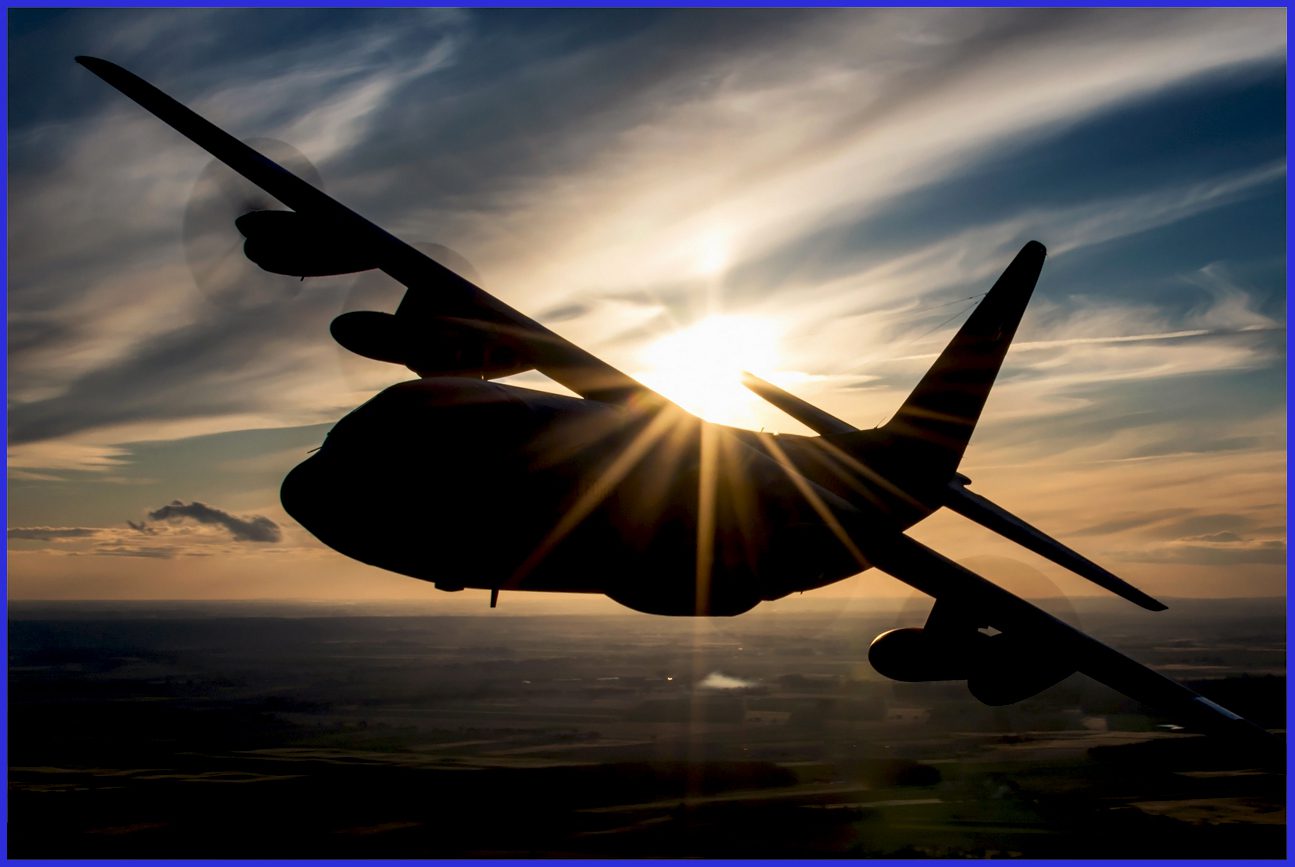The most versatile airlifter ever designed by Lockheed Martin, the C-130J has proven its worth since its inception. Discover the Best of the C-130J Super Hercules, as troops on the ground stake their lives on it. Victims of war, earthquakes, hurricanes, famine, and fire—casualties of an often dangerous world—call for a fast, effective response, and the C-130J delivers. No other transport brings so many necessities so close to the need so quickly.
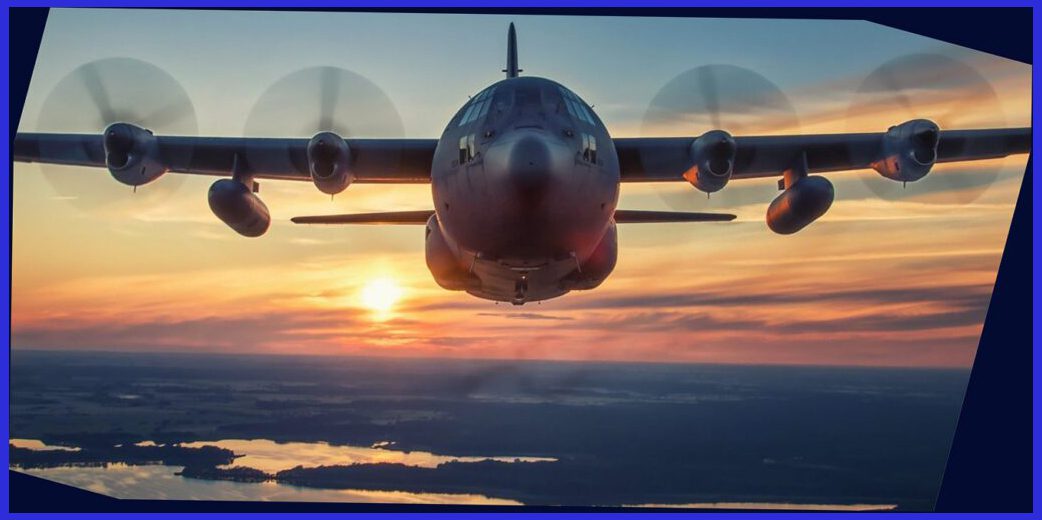
The latest iteration of the C-130 Hercules, known as the C-130J Super Hercules, stands out as an exceptionally versatile military transport aircraft celebrated for its outstanding agility and advanced technological features. Crafted by Lockheed Martin, it showcases a contemporary glass cockpit, upgraded engines, and improved performance capabilities.
Boasting a length of 97 feet and a wingspan of 132 feet, the aircraft can transport up to 92 troops or 64 paratroopers, in addition to cargo. Its maximum payload capacity is approximately 42,000 pounds. The C-130J has four Rolls-Royce AE 2100D3 turboprop engines, delivering remarkable power and fuel efficiency. Acknowledged for its short takeoff and landing capabilities with 6-bladed reversible-pitch propellers, the aircraft is well-suited for operations in austere and challenging environments.
Up to 2022, nearly 500 C-130J aircraft have been delivered to 26 operators across 22 countries, including the United States. Serving diverse roles such as troop transport, medical evacuation, and cargo airlift, it has established itself as a dependable and adaptable workhorse in military operations.
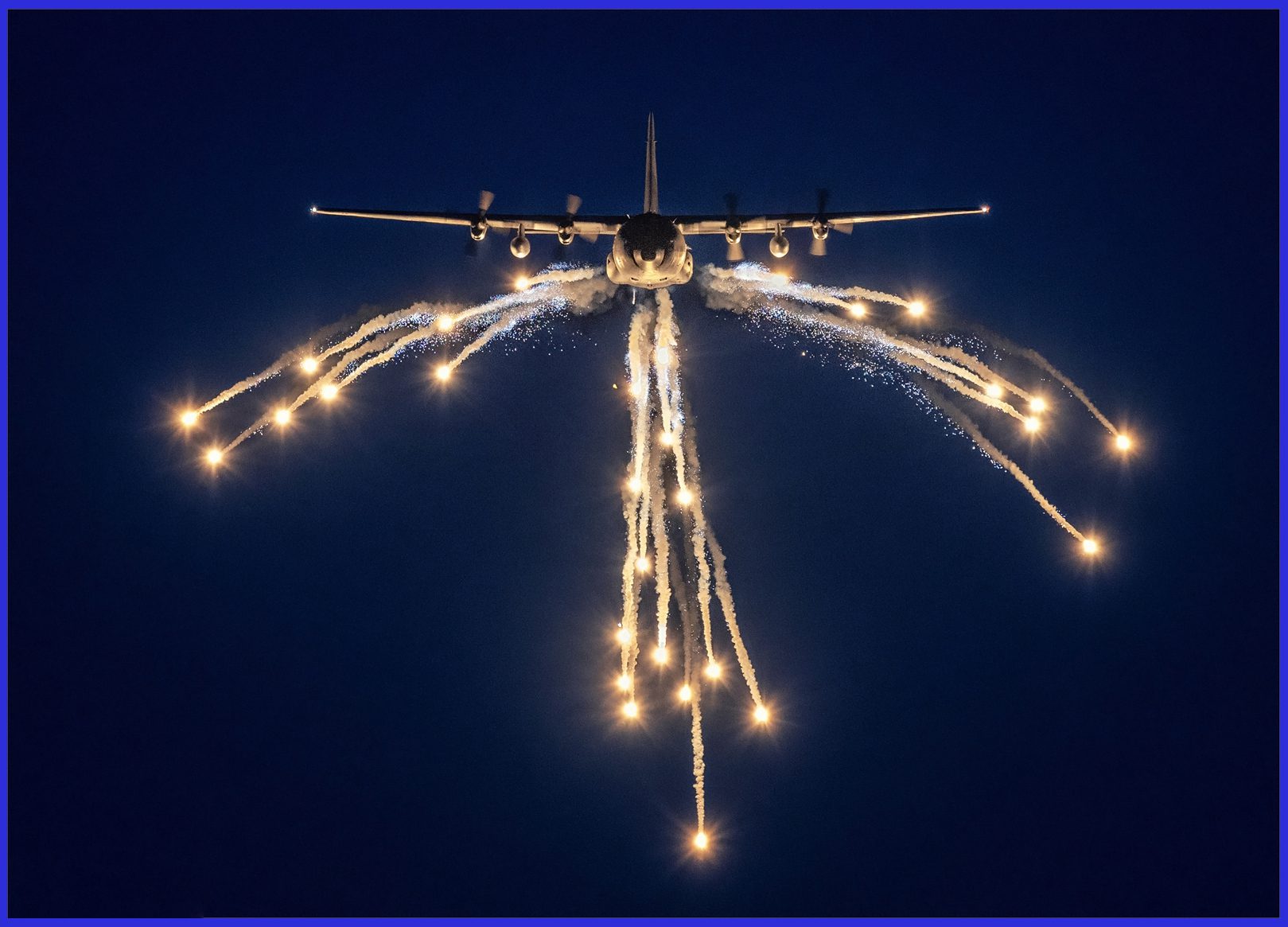
Evolution of the C-130J Super Hercules
The inception of the C-130J Super Hercules traces back to the early 1990s, marked as an advanced iteration of the renowned C-130 Hercules, which initially took flight in the 1950s. Lockheed Martin, the aerospace company overseeing the development of both variants, set out to elevate the aircraft’s performance and functionalities. In December 1994, Lockheed secured the inaugural order for the J-model, originating from the Royal Air Force (RAF) of the United Kingdom. The maiden flight of the C-130J Super Hercules took place on 5 April 1996.

However, the program encountered several significant challenges, including software integration glitches that led to schedule extensions and undisclosed stall characteristics necessitating aircraft modifications. The stall issue arose due to the increased power of the engines and the rise in propeller blades from 4 to 6, altering the aerodynamics and causing an enhanced tendency for the aircraft to stall and roll at lower speeds. Finally, in September 1998, after completing 4,000 hours of flight testing, the Federal Aviation Administration (FAA) granted type certification. Deliveries to the Royal Air Force (RAF) commenced in 1999 with the introduction of the Hercules C4 (C-130J-30) and Hercules C5 (C-130J) variants. Currently, over 350 C-130J aircraft are actively serving in the U.S. military.

Over time, the Super Hercules has become a standard asset in numerous air forces worldwide. The C-130 is characterized by its high-wing configuration, four-turbo-prop freighter design, featuring a loading ramp beneath the rear fuselage and retractable tricycle landing gear with main units enclosed in external fuselage fairings. Equipped with six-bladed propellers, the aircraft boasts increased range, higher speeds, and an advanced two-crew cockpit incorporating new mission computers, avionics, and updated systems.
Subsequent variants encompassed the C-130B, (designated F for the US Navy), E, H, and (designated K for RAF). Many of these variants gave rise to specialized sub-types, including the AC-130A gunship, HC-130B search and rescue (SAR) aircraft, MC-130E for special operations, KC-130F aerial refuelling tanker, and various EC-130E and EC-130H electronic surveillance and airborne communications aircraft. However, as of 2023, the RAF has retired the variant.

Over the years, the C-130J has undergone continuous upgrades and modifications to meet evolving military requirements. Its versatility and adaptability have led to its widespread adoption by various air forces around the world. The C-130J Super Hercules remains a vital asset for military airlift and tactical operations, showcasing the successful evolution of a classic design to meet modern demands.

Exploring the Features of the Super Hercules: Proven and Improved
Power Lifter: The four Rolls-Royce AE2100D3 engines incorporated into the system produce an impressive 24% more thrust while achieving a remarkable 17% increase in fuel efficiency. Each engine is responsible for turning an all-composite, six-blade propeller that stands out for its lighter weight and reduced number of moving parts. The entire engine system is under the precise control of a Full Authority Digital Electronic Control (FADEC), ensuring optimal functionality. Additionally, the implementation of the “Hotel” mode, designed for safer engine running and prop-feathering, serves to eliminate prop wash and diminish noise and wind disturbances during ground operations.

Simplified Crew-Machine Interface: The two-person C-130J cockpit incorporates fully integrated digital systems to ease the crew workload. Four-colour multifunction liquid crystal displays provide all aircraft control, operations, and navigation data. Furthermore, pilots use HUDs as primary flight instruments, increasing situational awareness. All displays are fully compatible with night vision imaging systems (NVIS), significantly easing tasks associated with blackout operations. Situational awareness increases as crew workload decreases, with systems that establish new milestones for sophistication in military transport aircraft.

The Smarter Airlifter: Dual mission computers form an integrated aircraft network in the C-130J. Computers manage and automate many functions once performed by flight engineers and navigators. Systems manage the FADEC, advisory caution and warning systems, automatic thrust control, computerized maintenance recording, electronic circuit breaker system, advanced digital map and communication/navigation suite.
The Larger Airlifter: Seasoned veterans of the C-130 identify the new C-130J immediately. its fuselage is 15 feet long, meaning the airlifter can move more cargo, troops or special equipment. All the outstanding performance and efficiency of the world’s most advanced airlifter stretches its strengths with a longer airframe- and more cargo area.
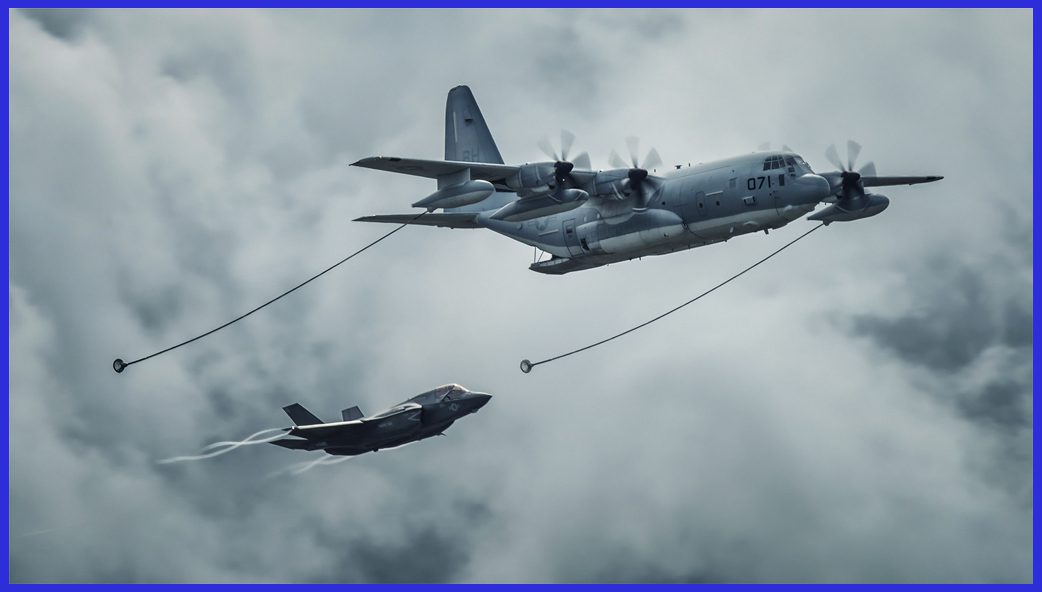
Versatility: The Super Hercules for Any Mission, Anywhere, Anytime
- Airland: The C-130J is a tactical airlifter ready for the toughest missions and anywhere environment. Its integrated precision Radar Approach ( IPRA ) system permits CAT II-type accuracy approaches and computer-generated glide path vectors and touchdown points to simplify the landing. Rapid reconfiguration and loading are accomplished through self-contained cargo handling systems and an underfloor winch.
- Long-Range Strategic Airlift: Cruising at 30,000 feet (13,600 m), the C-130J covers over 3,000 miles (5,555 km) to the destination with a greater payload than any previous C-130 and arrives with pinpoint, 16-meter navigation accuracy through integrated GPS/INS systems. Digital maps and high-fidelity ground-mapping radar further enhance the C-130J’s navigation flexibility. The aircraft’s long range makes it ideal for configuration for aerial refuelling duty.

- Aerial Delivery: No runway? No problem. Rapid delivery of cargo, troops, and other materials can be accomplished even when landing is impossible. Supported by an advanced aerial delivery system directly linked to the aircraft’s mission and navigation systems, the C-130J can aerial-deliver 39% more paratroopers or 50% more container delivery system (CDS) resupply bundles than earlier Hercules models.
- Aerial Refuelling: With a 57,500-lb (8,455 US gallons) fuel offload capacity using wing fuel and external tanks, the KC-130J can also carry an additional 24,392 pounds (3,600 US gallons) in a specially configured internal fuselage tank. The tanker’s standard probe-and-drogue configuration is well-suited for refuelling helicopters and jet aircraft.


C-130J Super Hercules Specifications
- Crew: 3 (two pilots, and one loadmaster)
- Overall length: 97 ft 9 in (29.79 m)
- Cargo bay length: 41 ft (12.50 m)
- Cargo bay width: 10 ft (3.05 m)
- Cargo bay height: 9 ft (2.74 m)
- Length: 97 ft 9 in (29.79 m)
- Wingspan: 132 ft 7 in (40.41 m)
- Height: 38 ft 10 in (11.84 m)
- Wing area: 1,745 sq ft (162.1 m2)
- Empty weight: 34,274 kg (75,562 lb)
- Max takeoff weight: 70,307 kg (155,000 lb)
- Max Payload (2.5 G): 48,000 lb ( 21,770 kg )
- Powerplant: 4 × Rolls-Royce AE 2100D3 turboprop engines, 4,637 shp (3,458 kW) each
- Propellers: 6-bladed Dowty R391 composite constant-speed fully-feathering reversible-pitch propellers
- Max Cruise Speed: 670 km/h (417 mph)
- Cruise speed: 644 km/h (400 mph)
- Landing/Takeoff Ground Roll ( Typical Assault Mission ): 1,500 ft ( 460 m )
- Max Range: with a normal payload of 15,422 kg (34,000 lb): 3,300 km (2,100 mi)

C-130J-30s Super Hercules with the Indian Air Force
The Indian Air Force (IAF) acquired six C-130J-30s in early 2008, investing up to US$1.59 billion for its special operations forces as part of a package deal with the US government through the Foreign Military Sales (FMS) program. In October 2011, India expressed its intention to exercise the option for an additional six aircraft, driven by the C-130J’s positive performance in various operations. In July 2012, the U.S. approved India’s request for six more C-130Js through the FMS program.
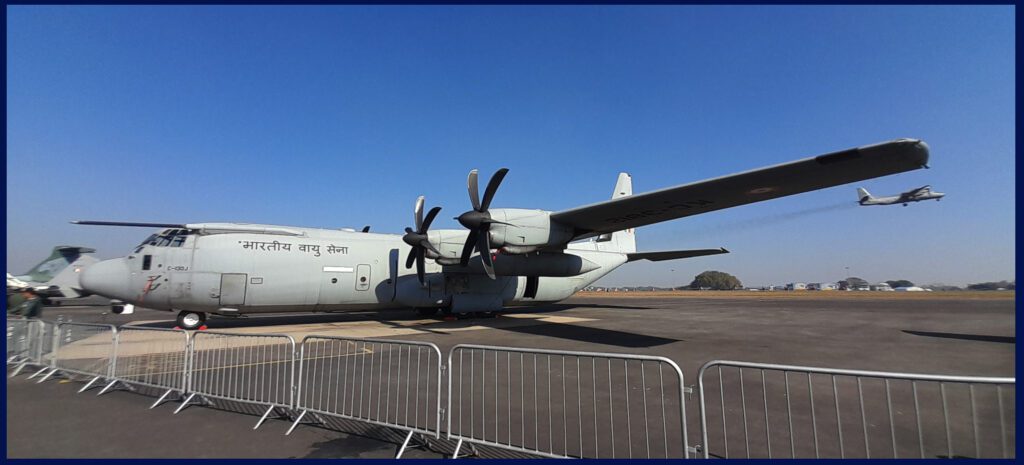
In December 2013, India’s Cabinet Committee on Security (CCS) approved the acquisition of an additional 6 aircraft, bringing the total to 12 C-130J-30s. The “J-30” designation indicates that it is an extended fuselage version of the C-130J, offering increased cargo capacity. The C-130J-30 Super Hercules has proven to be invaluable to the Indian Air Force (IAF) in supporting a range of missions, including humanitarian assistance and disaster relief. Its capability to operate from short and unpaved airstrips makes it well-suited for diverse terrains, including the challenging Himalayan regions.

Operational History of the Indian Super Hercules
On August 20, 2013, the Indian Air Force achieved a significant milestone by executing the highest landing of a C-130J at the Daulat Beg Oldi airstrip in Ladakh, reaching an altitude of 16,614 feet (5,064 meters).
On January 7, 2024, the Indian Air Force’s C-130J executed a night landing at the high-altitude advanced landing ground in Kargil. The IAF announced this achievement via its official communication channels, stating, “In a first, an IAF C-130J aircraft carried out a night landing at the Kargil airstrip. Utilizing terrain masking en route, the exercise was also integrated with a training mission involving Garud commandos.” The video released by the IAF illustrates the use of weather radars, infrared reconnaissance pods, and Night Vision Goggles for the “unassisted” landing. This capability enables the IAF to deploy assets for offensive or humanitarian missions day and night at this strategically important airstrip.
These notable accomplishment underscores the remarkable capabilities of the C-130J in handling challenging conditions at high elevations, affirming its suitability for missions in demanding terrains.

In conclusion, the Super Hercules stands as a testament to the enduring legacy of the C-130 series, seamlessly blending its storied heritage with cutting-edge technology. Adopted by the Indian Air Force, the aircraft’s extended fuselage enhances its versatility, making it a cornerstone of tactical airlift operations. With a robust design, advanced avionics, and the ability to operate in diverse environments, the C-130J-30s excels in roles ranging from troop transport to humanitarian aid.
Its presence in the Indian Air Force underscores the aircraft’s adaptability to the complex and dynamic requirements of modern military and humanitarian missions. As a reliable workhorse, the Super Hercules continues to serve as a symbol of strategic mobility and operational effectiveness, embodying the spirit of innovation and resilience in military aviation.

Important Announcement for Our Valued Readers!
After an article is published, it is possible that updates or changes may have occurred beyond the time of publication. Therefore, it is important to be aware that certain information in the article might be outdated. To ensure the most accurate analysis, it is highly recommended to verify the content with the latest sources available.
However, we are dedicated to delivering outstanding articles on military products and global updates. Maintaining quality and smooth operation requires resources. Your support sustains our efforts in providing insightful content. By purchasing high-quality products through our affiliated links, you help us keep our platform alive and acquire top-notch items. Your unwavering support is invaluable and inspires us to strive further.
We welcome your suggestions and requests for more information, as we value feedback from our readers. If there’s specific defence material or equipment not covered on our site, please share your request in the comments. We’ll strive to research and provide the required information. We sincerely thank you for your unwavering interest in our website, and we eagerly anticipate hearing from you! Enjoy your reading experience!

